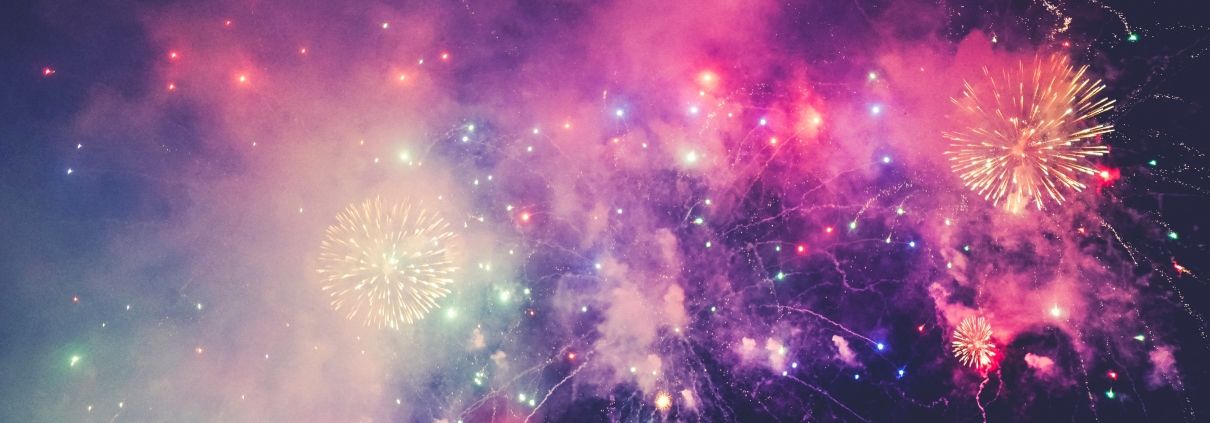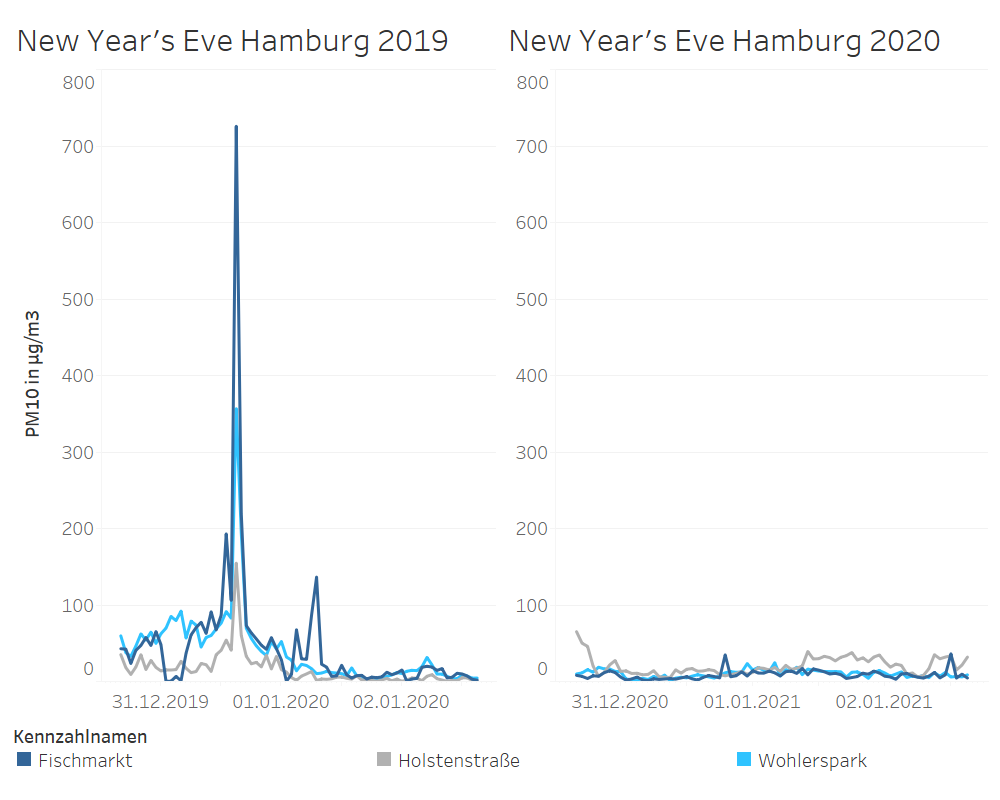What effect did the German fireworks ban have on air quality on New Year’s Eve 2020?
One year ago we analysed the particulate matter concentrations caused by fireworks on New Year’s Eve in the city of Hamburg, and their effect on overall air quality. This time around, the sale of fireworks was prohibited due to the Coronavirus pandemic. In the city of Hamburg the use of fireworks was completely banned. What did that mean for the urban air quality?
On New Year’s Eve 2019, particulate matter (PM10) peaked at more than 1.600 µg/m3 at some of our sensing locations in Hamburg. Even the hourly average was more than 700 µg/m3 in some places. As a comparison: In the European Common Air Quality Index (EU CAQI), hourly concentration levels exceeding 180 µg/m3 fall in the worst category. The legal limit for hourly PM10 concentrations is at 50 µg/m3.
On New Year’s Eve 2020, nearly no peaks were detectable. The fireworks ban – additionally to its function to limit Coronavirus spread – also had a positive environmental impact on the air quality in the city.

 unsplash.com / Mike Enerio
unsplash.com / Mike Enerio
 Unsplash.com
Unsplash.com Unsplash.com
Unsplash.com